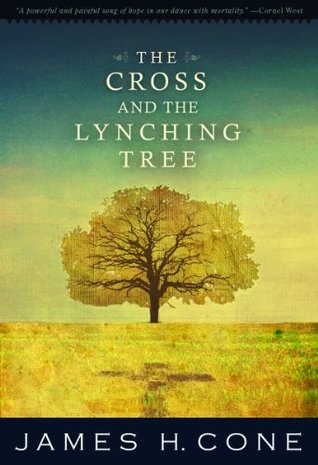More on this book
Community
Kindle Notes & Highlights
Until we can see the cross and the lynching tree together, until we can identify Christ with a “recrucified” black body hanging from a lynching tree, there can be no genuine understanding of Christian identity in America, and no deliverance from the brutal legacy of slavery and white supremacy.
The cross helped me to deal with the brutal legacy of the lynching tree, and the lynching tree helped me to understand the tragic meaning of the cross.
The cross is a paradoxical religious symbol because it inverts the world’s value system with the news that hope comes by way of defeat, that suffering and death do not have the last word, that the last shall be first and the first last.
The cross was God’s critique of power—white power—with powerless love, snatching victory out of defeat.
Both the cross and the lynching tree represented the worst in human beings and at the same time “an unquenchable ontological thirst”[1] for life that refuses to let the worst determine our final meaning.
Although white southerners lost the Civil War, they did not lose the cultural war—the struggle to define America as a white nation and blacks as a subordinate race
If the blues offered an affirmation of humanity, religion offered a way for black people to find hope.
While the lynching tree symbolized white power and “black death,” the cross symbolized divine power and “black life”—God overcoming the power of sin and death.
The more black people struggled against white supremacy, the more they found in the cross the spiritual power to resist the violence they so often suffered.
If the God of Jesus’ cross is found among the least, the crucified people of the world, then God is also found among those lynched in American history.
The cross places God in the midst of crucified people, in the midst of people who are hung, shot, burned, and tortured.
In the “lynching era,” between 1880 to 1940, white Christians lynched nearly five thousand black men and women in a manner with obvious echoes of the Roman crucifixion of Jesus. Yet these “Christians” did not see the irony or contradiction in their actions.
What New Testament scholar Paula Frederickson says about crucifixion in Roman society could be substituted easily for lynching in the United States. Crucifixion was a Roman form of public service announcement: Do not engage in sedition as this person has, or your fate will be similar. The point of the exercise was not the death of the offender as such, but getting the attention of those watching. Crucifixion first and foremost is addressed to an audience.
The will-to-survive is so strong that it transmutes easily into the will-to-power.
This suggests why it is so hard for whites and blacks to talk about white supremacy; even among progressive intellectuals like Niebuhr, there is too little empathy regarding black suffering in the white community.
In contrast to Niebuhr, King never spoke about proximate justice or about what was practically possible to achieve. That would have killed the revolutionary spirit in the African American community. Instead, King focused on and often achieved what Niebuhr said was impossible.
These questions, demanding God’s explanation for black suffering, sit at the nerve center of black religion in America, from the slave trade to the prison industrial complex of today. Black religion comes out of suffering,
That was the point made by womanist theologian Jacquelyn Grant when she used the experience of poor black women as the lens for interpreting the meaning of Jesus Christ today. “The significance of Christ is not found in his maleness, but in his humanity,” writes Grant. “This Christ, found in the experiences of black women,” “the oppressed of the oppressed,” “is a black woman.”
The gospel of Jesus is not a rational concept to be explained in a theory of salvation, but a story about God’s presence in Jesus’ solidarity with the oppressed, which led to his death on the cross. What is redemptive is the faith that God snatches victory out of defeat, life out of death, and hope out of despair,
Madolynn liked this
The cross is the burden we must bear in order to attain freedom.
Perhaps nothing about the history of mob violence in the United States is more surprising than how quickly an understanding of the full horror of lynching has receded from the nation’s collective historical memory. —W. Fitzhugh Brundage
The Christian gospel is God’s message of liberation in an unredeemed and tortured world.
Without concrete signs of divine presence in the lives of the poor, the gospel becomes simply an opiate;
Every time a white mob lynched a black person, they lynched Jesus. The lynching tree is the cross in America.
The real scandal of the gospel is this: humanity’s salvation is revealed in the cross of the condemned criminal Jesus, and humanity’s salvation is available only through our solidarity with the crucified people in our midst. Faith that emerged out of the scandal of the cross is not a faith of intellectuals or elites of any sort. This is the faith of abused and scandalized people—the losers and the down and out.
Madolynn liked this
Before the spectacle of this cross we are called to more than contemplation and adoration. We are faced with a clear challenge: as Latin American liberation theologian Jon Sobrino has put it, “to take the crucified down from the cross.”[10]


